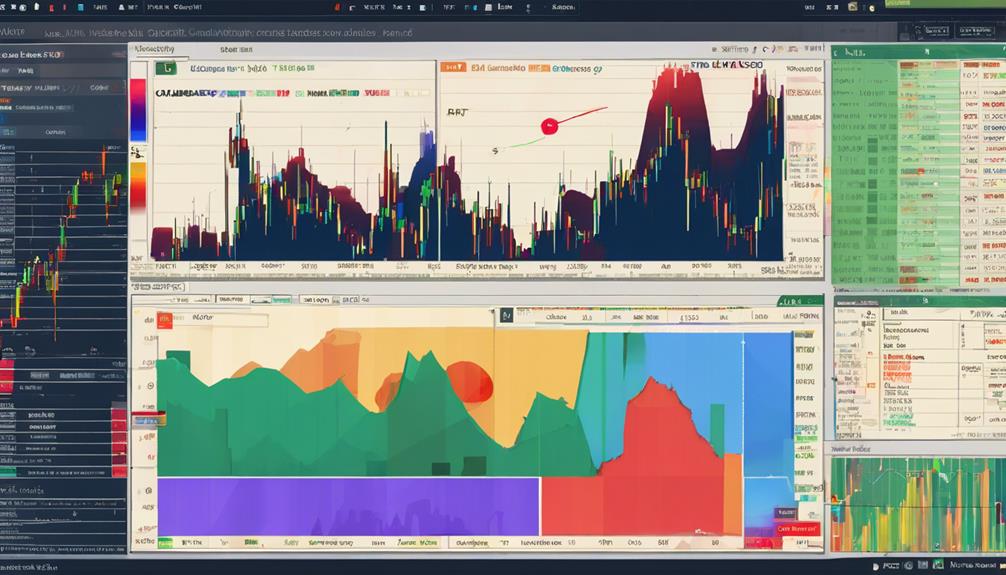In the ever-evolving landscape of trading, mastering the art of utilizing volatility indicators can be a game-changer for investors seeking to navigate the complexities of the market.
By honing in on three key tips for effectively incorporating these indicators into your trading strategy, you can elevate your decision-making process and potentially enhance your trading outcomes.
Understanding the intricacies of these indicators, avoiding common pitfalls, and implementing practical strategies can pave the way for a more informed and strategic approach to trading.
Importance of Volatility Indicators
In the realm of financial markets, the significance of volatility indicators cannot be overstated as they serve as indispensable tools for evaluating price fluctuations and assessing risk levels in trading strategies. Volatility indicators play a crucial role in helping traders understand market dynamics, enabling them to make informed decisions based on the fluctuations in asset prices. By analyzing the level of volatility in the market, traders can adjust their strategies to capitalize on potential opportunities while mitigating risks associated with sudden price movements.
One key aspect of volatility indicators is their ability to highlight periods of both low and high volatility, allowing traders to adapt their trading approach accordingly. Understanding market volatility is essential for traders when making decisions about entering or exiting positions, selecting appropriate options strategies, and managing risk effectively. Popular volatility indicators such as the VIX, ATR, Bollinger Bands, Keltner Channel, and Donchian Channel provide valuable insights into market conditions, helping traders optimize their trading strategies for better outcomes in the stock market.
Common Mistakes to Avoid

To enhance trading effectiveness and minimize risks, it is imperative to steer clear of common mistakes associated with the utilization of volatility indicators in financial markets. One common mistake to avoid is relying solely on a single volatility indicator for all trading decisions. Instead, traders should conduct a comprehensive analysis by integrating various indicators such as the VIX, Average True Range (ATR), Chaikin volatility indicator, Implied volatility, Keltner channel indicator, Standard Deviation indicator, Relative Volatility Index (RVI), and Bollinger Bands.
Another critical error is using outdated or ineffective volatility indicators, which can lead to inaccurate assessments of market conditions. Additionally, ignoring the context and market conditions when interpreting volatility indicators can result in poor trading decisions. Overtrading based solely on volatility indicators without considering essential factors like trend analysis and market sentiment is a mistake that traders should avoid.
Lastly, overlooking the importance of backtesting volatility indicators to validate their effectiveness and suitability for a trading strategy can hinder success in volatility trading.
Practical Tips for Implementation

Building on the foundation of utilizing a diverse range of volatility indicators and avoiding common mistakes, the practical implementation of these indicators in trading strategies is essential for informed decision-making and risk management.
Traders can use Bollinger Bands to identify price volatility and potential breakout points in the market, allowing them to make informed decisions based on market dynamics.
Average True Range (ATR) can help measure price movement volatility, enabling traders to set effective stop-loss orders to manage risks effectively.
Monitoring the Volatility Index (VIX) provides insights into market sentiment and helps traders anticipate upcoming volatility levels, guiding their trading strategies accordingly.
By employing Keltner Channels, traders can assess volatility levels based on price movements to determine trends and potential reversals in the market.
Donchian Channels are useful for tracking support and resistance levels, aiding traders in identifying breakout points and making informed decisions based on technical indicators.
Can I Implement These Strategies with Volatility Indicators in Conjunction with the 3 Best Tips?
Yes, you can implement the best volatility indicators strategies in conjunction with the 3 best tips for more effective trading. By using these indicators to analyze market volatility and combining them with proven tips, you can make more informed and successful trading decisions.
Frequently Asked Questions
What Is the Best Strategy for Volatility Index?
The best strategy for the Volatility Index (VIX) involves monitoring it as a real-time indicator of implied volatility in the S&P 500. Traders can use the VIX to gauge market sentiment, anticipate potential volatility spikes, and adjust risk management strategies accordingly.
How Do You Use Volatility Indicators?
Volatility indicators are crucial in analyzing market dynamics, offering insights into price movements and potential shifts in sentiment. By incorporating tools like Bollinger Bands, ATR, VIX, Keltner Channels, and Donchian Channels, traders can make informed decisions based on market volatility.
What Is the Best Way to Measure Volatility?
Measuring volatility is best achieved through indicators like Average True Range (ATR) and the Volatility Index (VIX). ATR calculates average price ranges, while VIX reflects market sentiment. These tools provide valuable insights into price movements and market expectations.
What Is the Best Options Strategy for Volatility?
The best options strategy for volatility is the long straddle. It involves purchasing a call and put option at the same strike price and expiration date, profiting from significant price movements in either direction in highly volatile markets.
Conclusion
In conclusion, understanding and utilizing volatility indicators in trading is essential for making informed decisions and maximizing success in the forex market.
By avoiding common mistakes and implementing practical tips, traders can effectively assess market volatility and identify potential entry and exit points.
Remember, in the world of trading, knowledge is power, and utilizing volatility indicators can give traders the edge they need to succeed.
